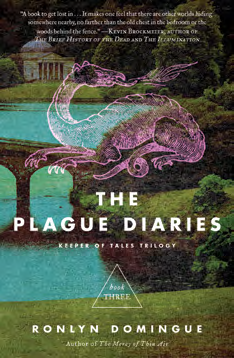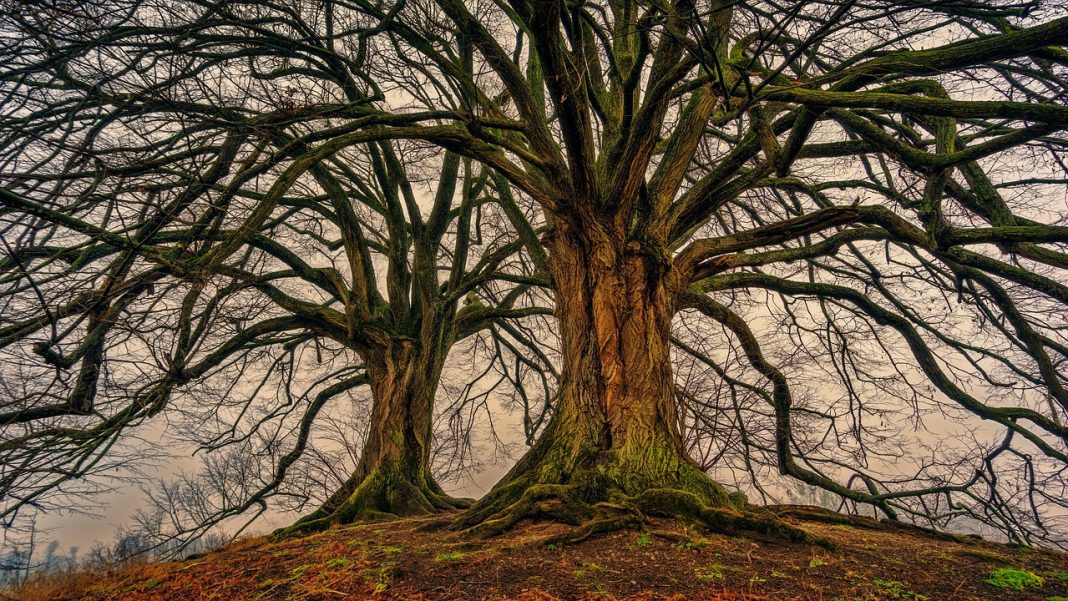In her first memory of this life, she clutched two pecans in her small hands. Warm brown with tabby cat black stripes, dry and cool to the touch. She might have gathered an empty husk, too, its edges curled as if forced open by fire. Perhaps she heard a nut fall and, like any two-year-old creature, looked up into the branches where the autumn leaves rustled.
During the winter when she was three, one freezing night, in a place where snow rarely falls, white blanketed rooftops and yards. She doesn’t remember building the tiny snowman, but when she was older, she saw a photo and recalled the carport where she crouched, the pecan tree bare and braving the cold at her back, out of frame.
Spring, then summer. She does remember the swing where she sat with her Mother Goose book, repeating the rhymes to herself, but she never felt alone. Close by, the pecan tree shaded her. He was not her favorite tree—that distinction went to the live oak, five centuries old, that grew next to the church where she was told to believe in angels and a holy ghost—but she loved the old gray fellow with the greenbitter leaves.
Under him, she played, read, picked flowers, and sat with Petunia, the doll made by her great aunt. She knew welcome and safety there. When her family moved from her great-grandmother’s duplex before she turned five, she was torn from the roots of her comforting friend.
She would acknowledge the tree when her extended family joined together for Christmas and stare at it over the fence when she visited her cousin, whose house was behind their great-grandmother’s. The tree and she were not so much estranged as growing apart, her memory fading as adolescence, adulthood, robbed her of enchantment.
This magic would return decades later, when she was a writer and a girl named Secret came to her, a child with black hair, tawny skin, and eyes the colors of night and day who could speak to creatures and plants. She had no such gift, this writer, but she thought Secret chose her to tell the story because of their shared love of Nature and what cannot be easily explained.
She began to remember again—with her body, not her mind—the presence of the old pecan tree. Shelter, companion, protector, and something else. Something else. She had not been alone with him.
When the glimpse ripped through, she questioned whether it was real or true, but the tears confirmed what her heart knew.
Two years old, ta-ta, ta-ta (thank you, thank you) she said as she gathered flowers in her hands, offered by a fairy clothed in mist. The fairy—oh, she knew her, knew her well—vanished as her father shouted in anger and rushed across the yard to her.
In silent witness, the pecan tree stood his ground, the thin place where the fairies crossed thick with bark.
 An arcane manuscript. A strange symbol. A 1,000-year-old family legacy. Secret Riven must discover the connections among them and confront her fate—to release a plague meant to destroy, and transform, the world as all have known it. The Plague Diaries illuminates the power of our choices, the scars they leave, and the wounds they heal. Fairy-tale fans will surely notice allusions to “Beauty and the Beast,” “Little Red Riding Hood,” and other favorites.
An arcane manuscript. A strange symbol. A 1,000-year-old family legacy. Secret Riven must discover the connections among them and confront her fate—to release a plague meant to destroy, and transform, the world as all have known it. The Plague Diaries illuminates the power of our choices, the scars they leave, and the wounds they heal. Fairy-tale fans will surely notice allusions to “Beauty and the Beast,” “Little Red Riding Hood,” and other favorites.

































